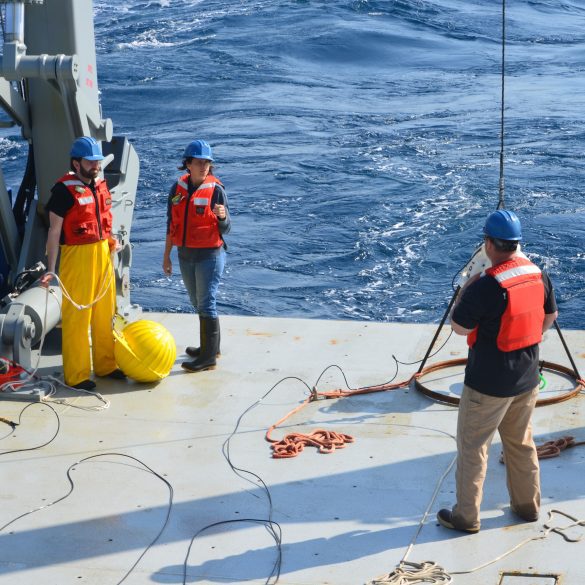Andres, M. (2021). Spatial and temporal variability of the Gulf Stream near Cape Hatteras. Journal of Geophysical Research: Oceans, 126, e2021JC017579. https://doi.org/10.1029/2021JC017579

On the deck of the RV Neil Armstrong during the first PEACH Cruise in April 2017. Left to right: Patrick Deane, Erran Sousa (URI), Magdalena Andres, Bosun Scott Loweth, and Nick DiSimone (Coastal Studies Institute) preparing for an instrument deployment. (Photo credit: Joe Zambone, NC State University.)
As part of the NSF-funded Processes driving Exchange at Cape Hatteras (PEACH) Project, 5 current- and pressure-sensor equipped inverted echo sounders (CPIESs) were deployed along the continental slope spanning the “separation location” where the Gulf Stream veers away from the boundary and crosses isobaths as it passes over the Deep Western Boundary Current and flows into the ocean interior. The CPIESs were deployed on AR15 and were successfully recovered 19-months later on AR33. The acoustic travel time records from these bottom-moored instruments document variability at scales that cannot be resolved by satellite altimetry and help us understand processes that drive Gulf Stream variability.
